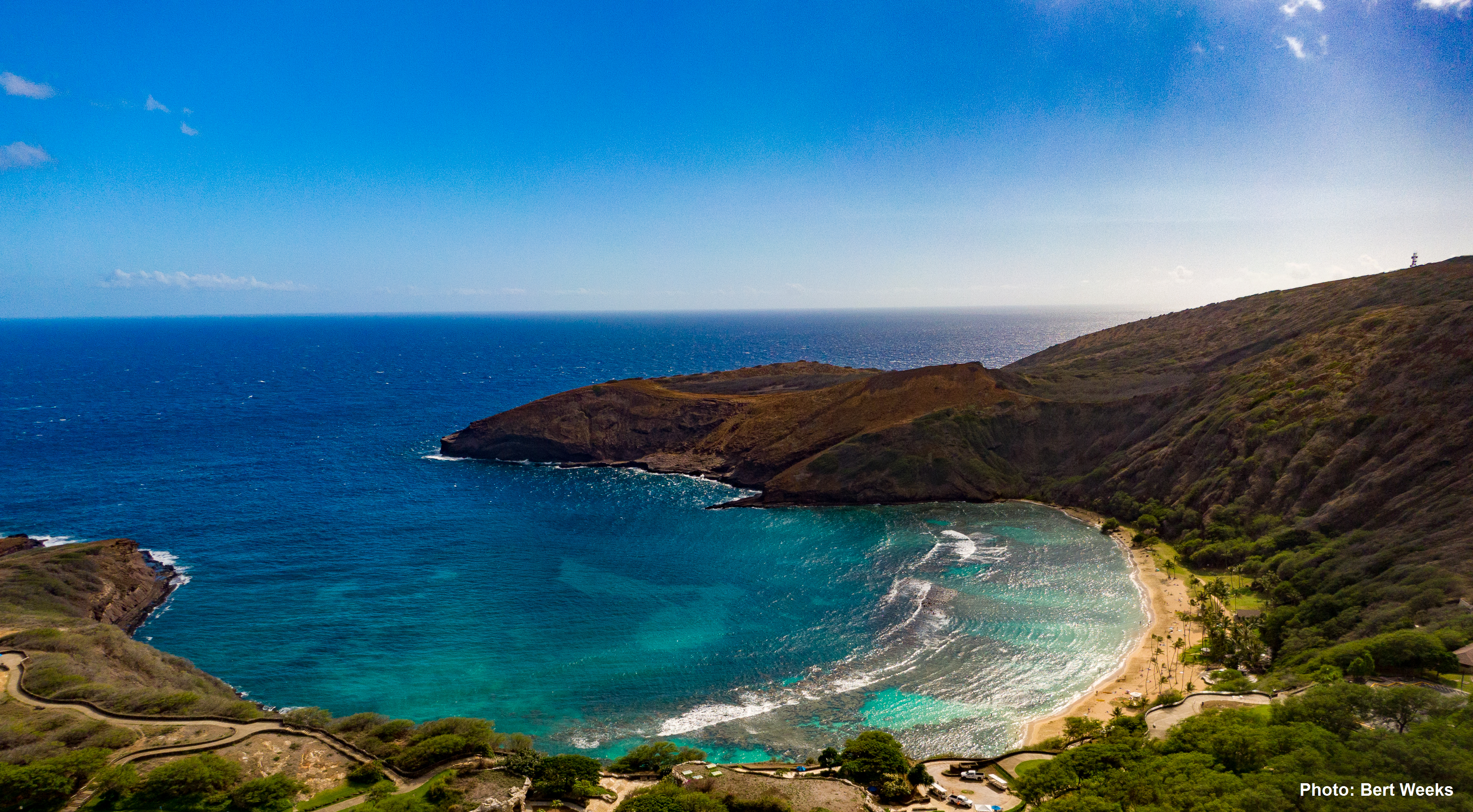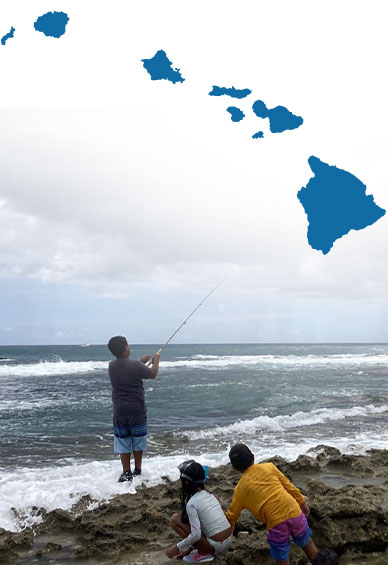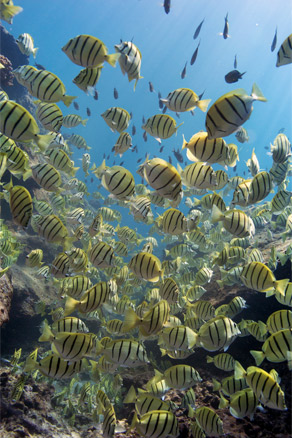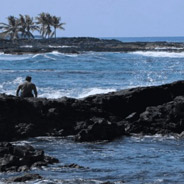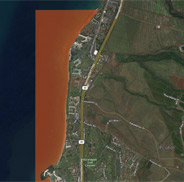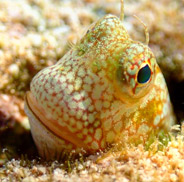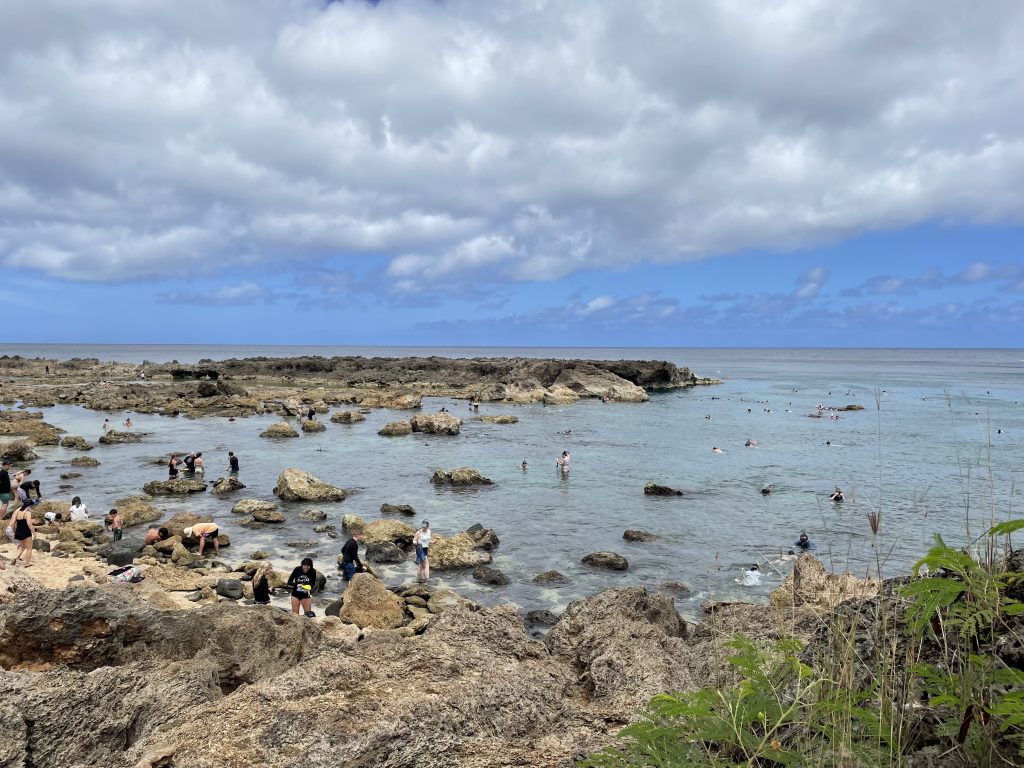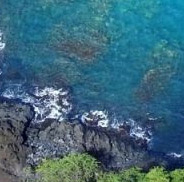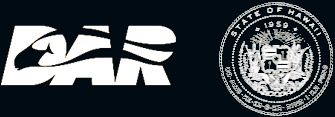Marine Management Areas
Ecological stewardship is not a novel concept in the Hawaiian Islands. An intimate understanding of biological and ecological connectivity between marine habitats and people allowed Native Hawaiians to manage marine ecosystems for continued abundance of resources, ‘āina momona. This ensured that the resources could sustain the people of Hawai‘i for centuries. Many communities across the state still use fishing practices based on traditional knowledge passed down from generation to generation.
To help protect and restore our nearshore resources, the Holomua Marine Initiative is working with communities to build island-specific strategies that include effectively managing nearshore resources around each main Hawaiian island. Reaching this goal is critical to reversing declines as well as sustaining healthy reefs, livelihoods, and communities across our island state.
What is a marine management area?
A marine management area, or MMA, is a place in state marine waters that is designated by statute or administrative rule for the purpose of managing how people use the geographic area and the ecologically and culturally important marine resources within its boundaries. The resources may include any type of marine life (e.g. fishes, invertebrates, algae) and their habitats. The goal of an MMA may also include preservation of cultural or historical resources or serve to resolve user conflicts.
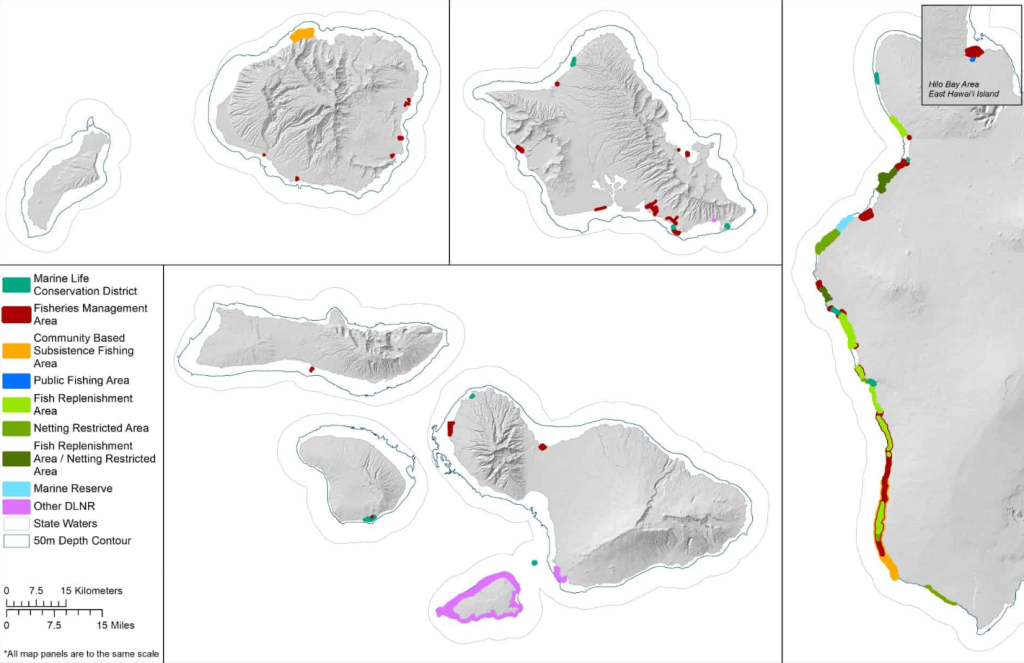
Click here to zoom in on the map above to view MMAs in Hawai‘i
Each MMA has its own set of legally designated marine resource regulations, which may include fishing regulations such as restrictions on gear type, size and catch limits, or take of particular species. Click below to learn more about a few of the MMAs we have in Hawai‘i.
What are the benefits of an MMA network?
A collection of individual managed areas that are ecologically connected into a network, such as through larval dispersal, provide benefits that are greater than can be achieved by single management areas.
MMA networks work by increasing biomass, species diversity, and fish abundance.
- biomass — increased weight/size of fish in an area
- species diversity — a larger variety of fish and coral in an area
- fish abundance — more fish means better fishing and more fish replenishing the next generation of fish
To learn more about the benefits of MMAs and see real life success stories here in Hawai‘i, visit our Science Behind Holomua webpage.
A strategically planned network of MMAs also improve habitats by providing better living conditions for marine life in coral reefs and other nearshore habitats, which in turn provides more homes for more fish and other marine life. A strong MMA network that includes different habitat types can also protect important fish throughout stages of their life cycle so that they provide and replenish the next generation of fish. Click here to read more about the ecological design principles that act as guidelines for creating effective MMA networks.
What does this mean for communities?
- Better fishing, diving, snorkeling
- Better habitats for marine life
- Preservation of our cultural heritage and customary subsistence fishing practices
- More resources for our keiki in the future to learn traditional practices
- Healthy habitats for marine life so that they are more resilient to change
- Increased coastal and reef resilience to climate change and local stressors
- Enhanced connection to place through culture, spirituality and well-being
- Protection and restoration of our ocean’s unique natural diversity and resources
Types of MMAs in Hawai‘i
In Hawai‘i there are many types of MMAs with different management priorities. Currently there are almost 60 MMAs across the state with only one—the West Hawai‘i Regional Fishery Management Area—designed as an ecologically-connected MMA network.
Community-Based Subsistence Fishing Areas, or CBSFAs, are unique marine areas co-managed between DAR and the local community to protect fishing practices customarily and traditionally exercised for purposes of native Hawaiian subsistence, culture, and religion. This type of marine management area seeks to balance the needs of the community with the needs of the fisheries and the ecosystem. Currently there are 3 CBSFAs in the State, with several other communities working towards their designation.
Fisheries Management Areas, or FMAs, manage or enhance fisheries for long-term sustainability of the resources and to help resolve conflict between diverse resource users. Some unique examples of Fisheries Management Areas include the Kahekili Herbivore Fisheries Management Area on Maui and the ‘Ewa Limu Management Area on O‘ahu.
Marine Life Conservation Districts, or MLCDs, were introduced in 1967 with the establishment of the Hanauma Bay MLCD on O‘ahu and continue to be an important tool to manage the valuable ecosystems in our nearshore waters today. They are designed to conserve and replenish marine resources to the greatest extent possible by providing fish and other aquatic life with a protected area in which to grow and reproduce. The taking of any type of living material (fishes, eggs, shells, corals, algae, etc.) and non-living habitat material (sand, rocks, coral skeletons, etc.) is generally highly restricted, if permitted at all. The 10 MLCDs that exist statewide today are popular places for snorkeling, diving and underwater photography.
Fully and highly protected MMAs – where most harvest is not allowed or is very restricted – such as MLCDs, have shown to have significantly greater fish biomass for species targeted for food compared to areas with lower levels of protection.
Learn more about Pūpūkea Marine Life Conservation District on O‘ahu
Natural Area Reserves, part of the Natural Area Reserves System (NARS), were established to preserve in perpetuity specific land and water areas that support communities, as relatively unmodified as possible, of the natural flora and fauna, as well as geological sites, of Hawai‘i. The diverse areas found in the NARS range from marine and coastal environments to lava flows, tropical rainforests, and even an alpine desert. Within these areas one can find rare endemic plants and animals, many of which are on the edge of extinction. Currently, 21 reserves on five islands, encompassing 123,810 acres of the State’s most unique ecosystems, exist today with ‘Āhihi-Kīna‘u Natural Area Reserve being the only one that is considered a MMA, as the others encompass mostly terrestrial ecosystems.
ʻAʻohe hana nui ke alu ʻia.
No task is too big when done together by all.
– Mary Kawena Pukui, ʻŌlelo Noʻeau #142

